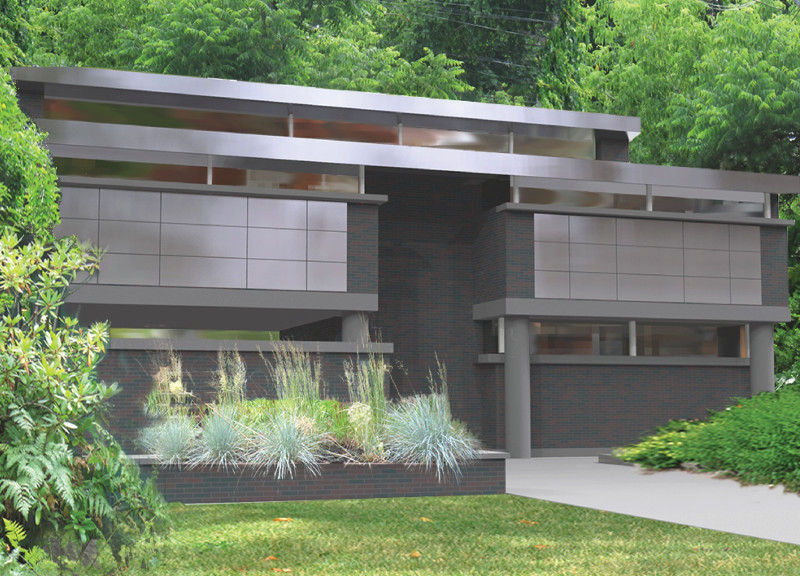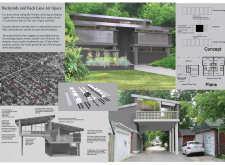5 key facts about this project
Community-Centric Design Approach
One of the key distinguishing features of this project is its focus on community engagement. It encourages property owners to work with local authorities to develop underused spaces, creating new housing units that foster a sense of community without compromising privacy. The design integrates multiple residential units into compact spaces, using both vertical and horizontal strategies to maximize land efficiency. This approach not only adds to the housing stock but also enriches the neighborhood fabric by increasing connections among residents.
Sustainable Material Use and Architectural Integration
The project employs a thoughtful selection of materials that contribute to its durability and aesthetic appeal. Exposed concrete blocks serve as a robust structural element, while wooden framing adds warmth and flexibility to the interior layouts. The inclusion of metal roofing and siding enhances visual coherence and provides long-term resilience against environmental factors. Additionally, large glass windows and balconies facilitate natural light penetration, promoting energy efficiency through passive solar design. This strategic combination of materials aligns with contemporary sustainability principles, reinforcing the project’s commitment to responsible architectural practices.
Key architectural elements include clerestory windows that maximize daylight while preserving privacy, allowing for airy interiors that remain welcoming. The design also incorporates flexible spaces that can adapt to varying family configurations, thus addressing the diverse needs of urban dwellers. Landscape integration further enhances the project, providing green areas that promote ecological benefits and community interaction.
Explore the architectural plans, architectural sections, and detailed architectural designs that illustrate the principles and ideas at play in this innovative approach to urban housing. Delve into the underlying architectural concepts that make this project a noteworthy example of thoughtful, community-oriented design in contemporary urban architecture.























